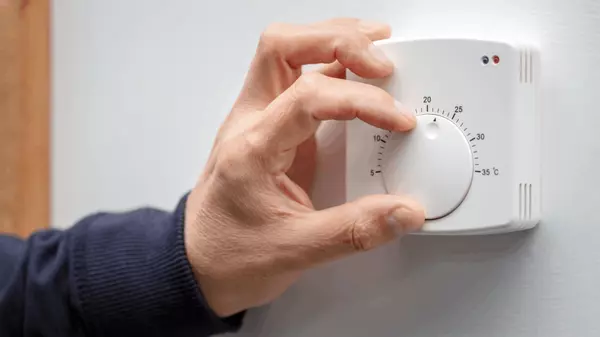
2024 Housing Trends in Michigan: A Look Ahead to 2025
As 2024 comes to a close, Michigan’s housing market is at a crossroads, reflecting the larger economic and demographic shifts taking place nationwide. Rising home values, tight inventory, affordability challenges, regional variations, fluctuating mortgage rates, and evolving migration patterns have shaped the real estate landscape throughout the year. These trends offer a glimpse into what 2025 may bring for buyers, sellers, and investors across the state. Rising Home Values: A Double-Edged Sword Michigan’s real estate market has seen a steady increase in home values, with the average home price reaching $245,716—a 4.3% rise over the past year. This growth reflects a robust demand for housing in a state that offers a diverse mix of urban, suburban, and rural living options. Cities like Detroit, Grand Rapids, and Ann Arbor have particularly benefited from this upward trend, as their economic opportunities and cultural amenities attract new residents. However, while rising home values signal a healthy market, they also present challenges. For homeowners, the increase in equity is a welcome development, providing opportunities to refinance, upgrade, or sell at a profit. On the flip side, higher prices are making it increasingly difficult for first-time buyers to enter the market. This dual impact sets the stage for ongoing debates about affordability and access to housing in Michigan. Inventory Constraints: A Market Under Pressure One of the defining characteristics of Michigan’s housing market in 2024 has been the shortage of available homes. Tight inventory has created a competitive environment, with many properties receiving multiple offers and selling quickly—often above the asking price. This phenomenon is not unique to Michigan but is part of a nationwide trend driven by a combination of factors, including low construction rates, high demand, and homeowners choosing to stay put. The inventory crunch has been most pronounced in desirable areas like suburban Detroit and the Grand Rapids metropolitan area. Here, buyers are vying for limited listings, resulting in bidding wars and driving prices even higher. The lack of inventory is particularly challenging for families and individuals seeking affordable housing options, a trend that could have long-term implications for Michigan’s housing market. Affordability Challenges: A Growing Concern The intersection of rising home values and limited inventory has led to affordability becoming a top concern for Michigan residents. While the state has traditionally been known for its relatively affordable housing compared to other regions, the dynamics of 2024 have shifted that narrative. Many first-time buyers and lower-income households find themselves priced out of the market, forced to explore rental options or move to less expensive areas. Affordability challenges are most acute in urban centers where job opportunities and amenities are concentrated. In Detroit, for example, the revitalization of certain neighborhoods has driven up prices, making it harder for long-time residents to afford housing. Similarly, in Grand Rapids, the booming economy and population growth have outpaced the supply of affordable homes. As policymakers and developers grapple with these issues, solutions such as increasing the supply of affordable housing, offering tax incentives for first-time buyers, and promoting mixed-income developments are gaining traction. Addressing affordability will be a key priority as Michigan enters 2025. Regional Variations: A Tale of Two Markets Michigan’s housing market is anything but monolithic. Regional variations play a significant role in shaping the experiences of buyers and sellers across the state. Urban areas like Detroit and Ann Arbor have seen rapid price appreciation due to high demand and limited inventory, while rural areas offer more stable prices and longer time-on-market periods. In suburban markets, proximity to major employment hubs and good schools drives demand. For example, communities in Oakland and Washtenaw counties have experienced significant growth as families seek the convenience of suburban living with access to urban amenities. Conversely, rural areas in northern Michigan provide opportunities for those looking for more affordable and spacious living options, albeit with fewer immediate conveniences. These regional differences underscore the importance of understanding local market dynamics when making real estate decisions. Buyers and investors need to consider factors such as job growth, infrastructure development, and community amenities to identify the best opportunities. Fluctuating Mortgage Rates: A Wild Card Mortgage rates have been a significant factor influencing Michigan’s housing market in 2024. After years of historically low rates, 2024 saw rates rise to levels that caused many buyers to reassess their purchasing power. This shift has introduced uncertainty into the market, with some buyers opting to delay their purchases in hopes of lower rates in the future. The impact of rising rates is particularly pronounced for first-time buyers, who often have tighter budgets and rely more heavily on financing. For existing homeowners, higher rates have made the prospect of selling less appealing, as many are reluctant to give up their low-rate mortgages. This “rate lock” effect has further contributed to the inventory shortage, creating a feedback loop that limits market activity. Looking ahead, the trajectory of mortgage rates will be a key determinant of Michigan’s housing market in 2025. If rates stabilize or decline, it could unlock pent-up demand and encourage more homeowners to list their properties. Conversely, continued rate hikes could further cool the market and exacerbate affordability challenges. Migration Patterns: Shifting Demographics Migration trends have also played a pivotal role in shaping Michigan’s real estate market in 2024. Cities like Detroit and Lansing have emerged as attractive destinations for buyers seeking more affordable housing compared to coastal markets. These cities offer a relatively high proportion of homes priced below $200,000, making them appealing to young professionals and families. At the same time, Michigan’s climate resilience has become a selling point. Unlike coastal states prone to hurricanes or drought-stricken areas in the West, Michigan offers a more stable climate, which is increasingly important to buyers concerned about long-term risks. This factor has bolstered interest in Michigan as a place to live and invest, particularly among those relocating from higher-risk regions. However, the influx of new residents has also driven up demand in certain areas, leading to rapid price increases and reducing the affordability that initially attracted many buyers. Balancing growth with affordability will be a critical challenge for Michigan’s housing market in the years to come. Looking Ahead to 2025 As Michigan prepares to enter 2025, its housing market reflects both the opportunities and challenges of a dynamic real estate landscape. Rising home values, tight inventory, and affordability concerns highlight the need for innovative solutions to ensure access to housing for all. Meanwhile, regional variations, mortgage rate fluctuations, and migration patterns underscore the importance of adaptability in a changing market. For buyers, 2025 may bring opportunities to find value in less competitive markets or explore creative financing options. Sellers, particularly those in high-demand areas, stand to benefit from favorable conditions but should be mindful of broader economic uncertainties. Investors, too, will need to navigate the complexities of a market shaped by shifting demographics and evolving buyer preferences. Ultimately, Michigan’s housing market remains a microcosm of larger trends shaping the nation. By addressing its unique challenges and leveraging its strengths, the state can chart a course toward a more equitable and resilient housing future.

Planning Next Year's Sale
As the year winds down, many homeowners start contemplating their next big move: selling their property. Whether you’re looking to upgrade, downsize, or relocate, preparing your home for sale is a crucial step that can significantly impact your success in the real estate market. By taking the time to enhance your home’s appeal and value, you can attract more buyers and potentially secure a higher sale price. Here are some essential tips to help you plan for next year’s sale. ### Make Needed Repairs Before you even think about listing your home, it’s vital to address any repairs that may deter potential buyers. A leaky faucet, squeaky door, or cracked tile may seem minor, but they can create a negative impression. Take a walk through your home with a critical eye and make a list of repairs needed. Consider hiring a professional inspector to identify any underlying issues that you might overlook. It may cost hundreds to get an inspector, but having everything ready to move-in ahead of time can add thousands of dollars in value. Focus on both small fixes and larger projects that could pose significant problems during a buyer's inspection. Repairing broken windows, fixing electrical issues, and ensuring your plumbing is in good shape can save you from future headaches and negotiations. Buyers appreciate homes that are move-in ready, so investing time in repairs can pay off significantly when it comes time to sell. Additionally, some repairs are REQUIRED for FHA financing, so having these repairs done ahead of time opens your home to more buyers. ### Freshen Up with Paint One of the simplest and most cost-effective ways to boost your home’s appeal is through fresh paint. A new coat of paint can breathe life into tired spaces and create an inviting atmosphere. Opt for neutral colors that appeal to a broad range of buyers—think soft grays, beiges, or whites. Don’t just stop at the interior; consider sprucing up the exterior as well. A well-painted front door can make a great first impression and set the tone for what lies inside. If you're unsure about color choices or techniques, consulting with a professional painter or interior designer can provide valuable insights. ### Upgrade Value-Boosting Items Investing in value-boosting upgrades can significantly increase your home's marketability. Focus on high-impact areas such as the kitchen and bathrooms—these are often deal-breakers for buyers. Consider updating appliances to energy-efficient models or replacing outdated fixtures with modern ones. Additionally, think about enhancing curb appeal by upgrading landscaping features or adding outdoor lighting. Simple touches like new cabinet hardware or updated countertops can also make a big difference without breaking the bank. Remember that these upgrades should align with current market trends while still reflecting your personal style.

Boost Your Home's Value: Top Energy-Efficient Upgrades Buyers Want
Introduction In today’s real estate market, energy efficiency has become a top priority for buyers. Homeowners who invest in energy-efficient upgrades are not only doing their part to reduce environmental impact but also enhancing their home’s appeal to potential buyers. With energy-efficient features, homes can sell faster and for a higher price, making these upgrades a valuable investment for sellers looking to increase their property’s market value. The Value of Energy Efficiency Energy efficiency has a direct impact on a home’s value. As more buyers become eco-conscious and cost-aware, they actively seek out homes with lower utility costs and sustainable features. According to a report by the National Association of Realtors (NAR), 61% of real estate professionals said their clients were interested in sustainability and energy efficiency. Additionally, homes with energy-efficient upgrades, such as improved insulation and high-efficiency HVAC systems, can increase a home’s value by up to 10%. Furthermore, a study by the U.S. Department of Energy found that energy-efficient homes can save homeowners an average of $200 to $400 annually on energy bills. This savings potential makes these homes highly attractive in a competitive market. Energy efficiency not only boosts a home's immediate appeal but also provides long-term financial benefits, creating a positive return on investment (ROI) for sellers. Key Energy Efficiency Upgrades 1. Insulation Improvements Proper insulation is one of the most effective ways to improve a home’s energy efficiency. By upgrading attic and wall insulation, homeowners can prevent energy loss and maintain a more consistent indoor temperature. This not only reduces heating and cooling costs but also improves overall comfort. When selecting insulation materials, consider options like fiberglass, cellulose, or spray foam. Professional installation is recommended to ensure the insulation is properly fitted, which maximizes its effectiveness. 2. High-Efficiency Heating and Cooling Systems Upgrading to a high-efficiency furnace, boiler, or HVAC system can have a significant impact on energy consumption. These systems use less energy to achieve the same level of heating or cooling, resulting in lower utility bills. Additionally, many governments and utility companies offer rebates and incentives for homeowners who install energy-efficient heating and cooling systems, further reducing the upfront cost of these upgrades. 3. Energy-Efficient Windows and Doors Older windows and doors can be a major source of energy loss. Replacing them with double or triple-pane windows can help reduce heat transfer and improve a home’s insulation. Beyond energy savings, new windows and doors enhance the aesthetic appeal of the property, increase security, and improve noise insulation. These upgrades add both functional and visual value, making them a smart investment for homeowners looking to boost their property’s marketability. 4. LED Lighting and Smart Home Devices LED lighting is a simple yet impactful upgrade that can lead to substantial long-term cost savings. LED bulbs use up to 75% less energy than traditional incandescent bulbs and can last up to 25 times longer. Additionally, integrating smart home devices such as programmable thermostats and home automation systems can significantly improve energy management. Smart thermostats, for example, allow homeowners to control their home’s temperature remotely, optimizing energy use even when they are away. Preparing for the Market When preparing to sell, it’s essential to showcase these energy-efficient upgrades to potential buyers. Ensure that all upgrades are clearly visible during showings, and highlight them in the property listing. Having documentation and receipts for all energy-efficient improvements is also important. These records provide proof of the investments made and can help justify a higher asking price during negotiations. Conclusion Investing in energy efficiency before selling a home offers multiple benefits. Not only can these upgrades increase the property’s value and appeal to eco-conscious buyers, but they also contribute to a sustainable future. Homeowners can enjoy the financial rewards of lower energy costs while enhancing their home’s overall marketability.
Recent Posts










